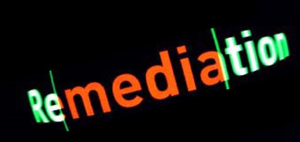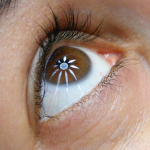Delagrange, Susan H. Technologies of Wonder: Rhetorical Practice in a Digital World. Logan, UT: Computers and Composition Digital P, 2011. ccdigitalpress.org/wonder/ Web. 12 Oct. 2014.
Delagrange encourages us to look at new media as tools to offer “new perspectives and processes that are unavailable in more traditional forms” (xi). She practices what she preaches by providing an e-book with hyperlinks of video presentations and examples, affording the reader an opportunity to interact with the text in addition to consuming it. Using examples of feminist theory, she explains how using new media may open the door for the underprivileged to take part in the rhetorical discussion of the college classroom.
One section of a chapter is devoted to remediation, which is the topic of my canonical book; her discussions helped  provide another perspective about the topic, and her definitions and specific examples added to my understanding of the concept (see p. 23 specifically). Since remediation describes where many English departments find themselves right now (“How much should I incorporate new media into my composition classroom?”), she claims that now is the time to begin questioning if we have to continue doing things the same way. She challenges the comp professor to consider that the “form(less)-ness is the content” (30), and to allow students to engage in creating meaning using media other than mere words.
provide another perspective about the topic, and her definitions and specific examples added to my understanding of the concept (see p. 23 specifically). Since remediation describes where many English departments find themselves right now (“How much should I incorporate new media into my composition classroom?”), she claims that now is the time to begin questioning if we have to continue doing things the same way. She challenges the comp professor to consider that the “form(less)-ness is the content” (30), and to allow students to engage in creating meaning using media other than mere words.
Through a discussion of the classical rhetorical term techne’, she explains why creating (proairesis) is so powerful in the process of discovery (36-37), and in my favorite section, she discusses the importance of instilling a sense of wonder within our students. We don’t want them to just see something as a passing fancy which captures their attention for a short while before they figure it out and lose interest, nor do we want
them to find something so complicated that it becomes confusing; instead, we want to find the “sweet spot” which captures and holds their attention to the point that they want to continue uncovering nuggets of truth of their own accord (41). Incorporating new media into our classrooms and forcing students to explain their function can help foster this sense of wonder.
Ball, Cheryl E. “Designerly ≠ Readerly.” Convergence 12.4 (2006): 393-412. Shared Google Folder. Web. 28 Oct. 2014.
Like many of the other authors we have read this semester, Ball is looking for a universal criterion to apply to new media. Specifically, Ball is looking for a rubric which will “help students interpret all of the modes of communication (as well as the designerly processes) in a new media text” (394). While she does not propose such a rubric specifically – because her desire is to explain “why this other thing is needed” (394) – she does take a digital text and walk through it in such a manner as she hopes our students could one day emulate. Using a variety of criteria from her knowledge of poetry, of rhetoric, of visual literacy, of audible resources, and “gestural and spatial” analysis (408), she comes to the conclusion that her meaning-making was the result of her ability to “mentally juxtapos[e]” all those elements (409). Therein lies the problem with her desire for an all-encompassing rubric. In order for students to accurately “read” a new media text, they need to know how to accurately use all these other rubrics first and apply them all layer upon layer to create a finished product. Perhaps if she is working with graduate-level students such a feat could be accomplished, but the freshmen students I deal with on a daily basis would have enough trouble understanding and applying just one of these rubrics. If such a rubric were the ultimate goal, perhaps a multi-semester course of study would have to be put in place in which students learn to apply one rubric at a time, continually building one upon the other. For example, the first semester, students could learn to evaluate text merely using the rhetorical situation. The following semester, they would use a new rubric while also engaging with the rhetorical situation, and so on.
The New London Group’s six modes of communication which work to create meaning (394-95):
- linguistic
- audio
- spatial
- gestural
- visual
- multimodal
Three cycles designers work through (395):
- understanding available designs
- designing the text
- presenting the redesigned product
Kress and van Leeuwen’s four strata of design (395-96):
- discourse: “socially constructed knowledge” which connects to what we already know
- design: (modes) the “ecology of code” from Brooke
- production : (material) the software available based upon the other strata
- distribution : determining how to make the design available to readers
Manovich’s qualifications of new media (399-402):
- numerical representation : must be “digital, mathematical, and algorithmically manipulated”
- modularity : assimilated pieces that together make a whole without losing their individuality
- automation : “‘creation, manipulation, and access’ process that . . . removes human intentionality from a text”
- variability : can exist in “potentially infinite versions”
- transcoding : “text must follow ‘the established conventions of the computer’s organization of data'” in order to be shareable
My responses for this week were to Canonical Book Presentations, not New Book Reading blog posts.
I was very impressed with the different styles teams used in presenting their books; I especially liked seeing different media in use. My favorite presentation was Shantal and Sherie’s book on The Rhetoric of Cool, found here and replied to here. While their presentation had the audio separate from the visual, I was able to get the audio playing in the background while I looked over the web site. They made the book sound simple, not in content, but in presentation, so that I have added it to my reading list. Who wouldn’t want to read about “cool” stuff, anyway? His book sounds like it focuses on making connections for students by providing them with something that they WANT to read/discuss/connect with, which reminds me of Ball’s “Designerly [not equal to] Readerly” and my current project Technologies of Wonder by Susan Delagrange. We are not good rhetoricians if we are not reaching our target audience: the students!
I also commented on Summer’s presentation on Baudrillard’s books Simulacra and Simulation and The Illusion of the End. (Actually, when I went back to find my comments for linking to them, I realized that I had never uploaded them from my Word document to her web page.) Thankfully Summer “dummed down” his work for us because Baudrillard is deep! I hope Summer never takes down this blog link because I foresee the need to have access to it for many years to come! Since I have a hard time grasping his questioning of reality, I have a hard time interacting with his ideas. I understand that our perceptions can skew the way we VIEW reality, but I’m not convinced that our shifted perceptions actually alter reality itself. Still, Summer had MANY wonderful examples of the concepts and video links to support them, so I know I can reference those as I continue to wrestle with his ideas.


 Perspective
Perspective